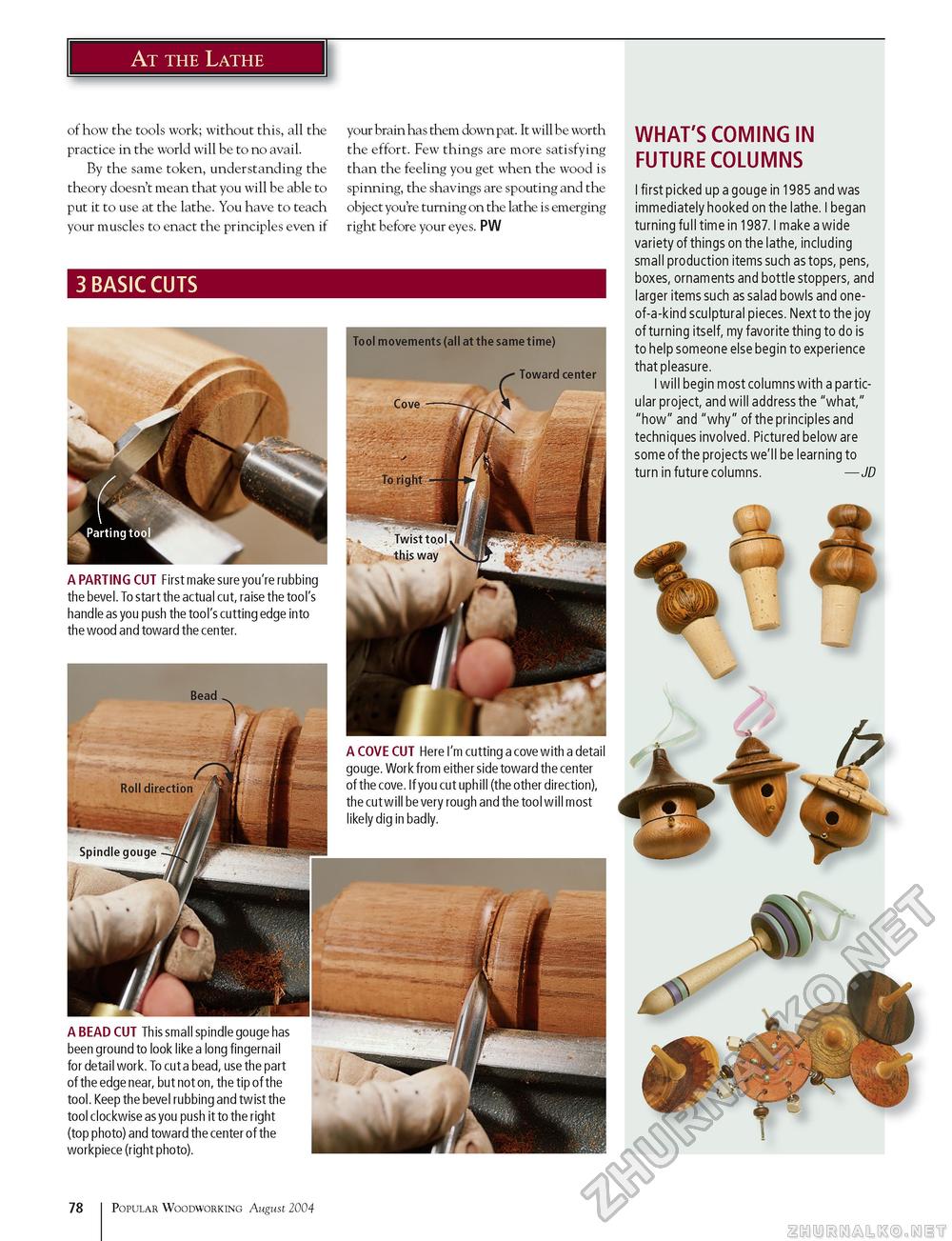Popular Woodworking 2004-08 № 142, страница 80
At the Lathe of how the tools work; without this, all the practice in the world will be to no avail. By the same token, understanding the theory doesn't mean that you will be able to put it to use at the lathe. You have to teach your muscles to enact the principles even if 3 BASIC CUTS A PARTING CUT First make sure you're rubbing the bevel. To start the actual cut, raise the tool's handle as you push the tool's cutting edge into the wood and toward the center. Bead . WO*, ■ A BEAD CUT This small spindle gouge has been ground to look like a long fingernail for detail work. To cut a bead, use the part of the edge near, but not on, the tip of the tool. Keep the bevel rubbing and twist the tool clockwise as you push it to the right (top photo) and toward the center of the workpiece (right photo). your brain has them down pat. It will be worth the effort. Few things are more satisfying than the feeling you get when the wood is spinning, the shavings are spouting and the object you're turning on the lathe is emerging right before your eyes. PW Tool movements (all at the same time) Toward center Cove A COVE CUT Here I'm cutting a cove with a detail gouge. Work from either side toward the center of the cove. If you cut uphill (the other direction), the cut will be very rough and the tool will most likely dig in badly. WHAT'S COMING IN FUTURE COLUMNS I first picked up a gouge in 1985 and was immediately hooked on the lathe. I began turning full time in 1987. I make a wide variety of things on the lathe, including small production items such as tops, pens, boxes, ornaments and bottle stoppers, and larger items such as salad bowls and one-of-a-kind sculptural pieces. Next to the joy of turning itself, my favorite thing to do is to help someone else begin to experience that pleasure. I will begin most columns with a particular project, and will address the "what," "how" and "why" of the principles and techniques involved. Pictured below are some of the projects we'll be learning to turn in future columns. — JD 78 Popular Woodworking August 2004 |








